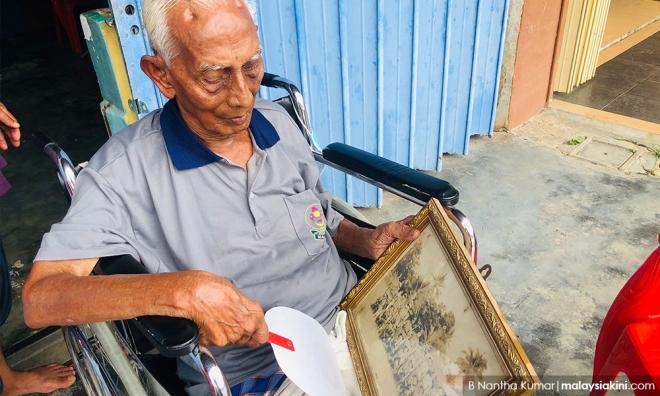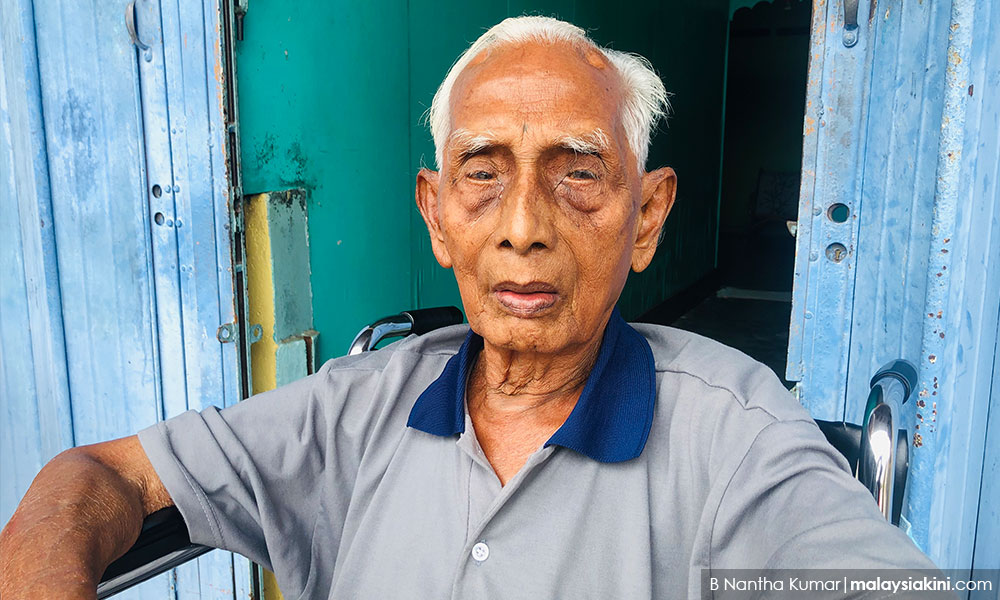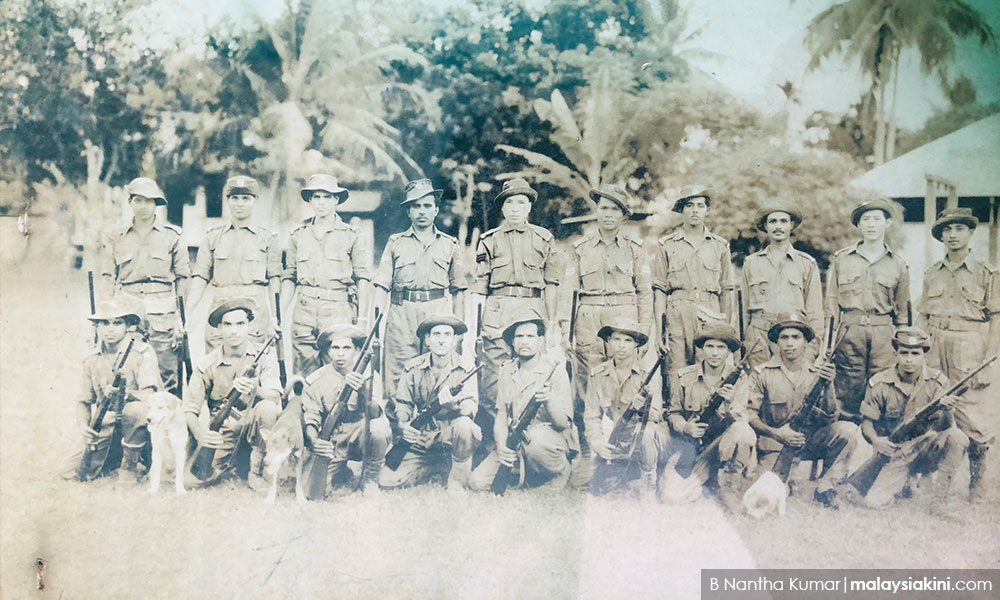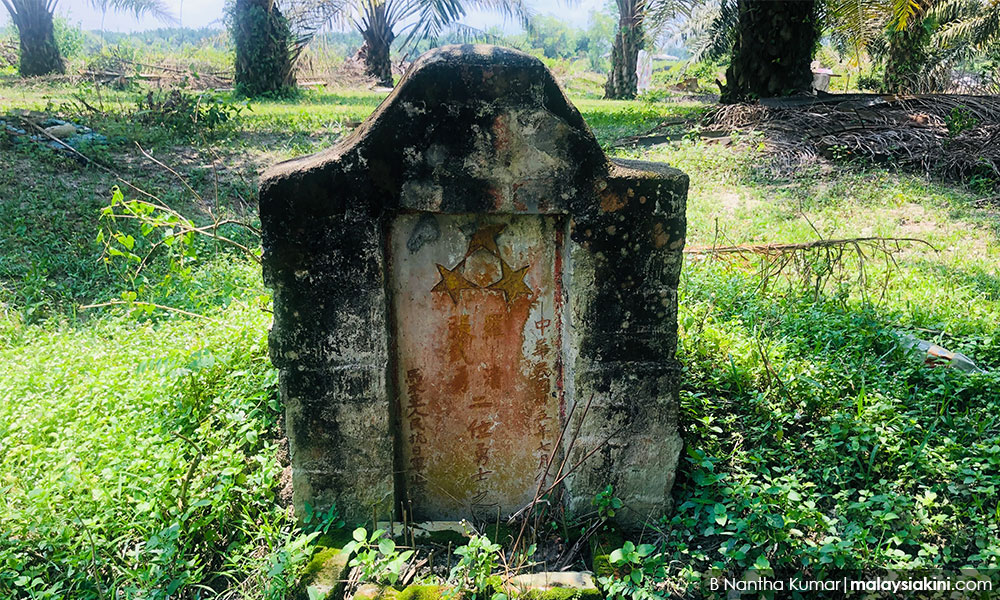
SLIM POLLS | Every morning, after 96-year-old wheelchair-bound Renggaiyah Marumuthu wakes up, he will spend the day in front of his shophouse.
He lives at a row of shophouses in Pekan Trolak which have been there for 80 years. Renggaiyah, who is fondly known as ‘Renga tathta’ which means Grandpa Renga, has lived there for more than half a century.
At the front of his shophouse, Renga would watch the roads and the vehicles passing by until lunchtime.
Malaysiakini had the opportunity to speak with him while covering the Slim by-election and was surprised to learn about his age and that he had voted in the country’s first general election in 1955.
Renggaiyah also revealed that he was a former soldier who had fought with the British against the Japanese army during World War Two.
“I was born in India in 1924 and started living in Malaya when I was seven years old. I came with my father to Temoh and grew up at a mine there. My father worked at that mine, and so I also learned from there,” he said.
Temoh is a small village located between Kampar and Tapah.
Renggaiyah said his wife and one of his children have already passed away. His four other children had moved away. He stays at his shophouse with an assistant.

Tailing Japanese soldiers
Relating his experience in World War Two, Renggaiyah said he joined the British army at Malim Nawar, Perak with a group of friends.
“Our duties weren’t at the frontlines, but we were helping the soldiers carry their supplies and so on,” he said.
Among his duties were to make signs out of stones, which would be buried along the road while he and several others tailed the Japanese soldiers.
These signs would serve as guides for the British soldiers to identify which roads to take to chase after the Japanese soldiers.
Renggaiyah said he once followed the Japanese soldiers all the way to Singapore after the British lost in the battles at Kampar, Teluk Intan and Tapah.
“There was a guide stone at Trolak known as the Japanese stone, but it was destroyed after the works to expand the road from Slim to Sungkai recently.
“There is so much history, it is not enough just to write a book. There is no way they can write down everything, right?” he said.

There are so many things that happened in World War Two in Perak which needs to be conveyed to the next generation, he said.
Renggaiyah said, after the Japanese surrendered, he returned to Perak from Singapore and stayed in Kampar and Tapah before moving to Trolak.
For the record, World War Two in Malaya involved soldiers from the Commonwealth including the British, Indians, Australians as well as Malaya residents fighting against Imperial Japanese soldiers in the early 1940’s.
Some historians view the British’s loss at Kampar and Slim River as one of the factors which dimmed the British empire’s chances of defending Malaya and Singapore.
World War Two graves
Renggaiyah said there are two World War Two graveyards in Bidor, with the first being in Kampung Baru Coldstream at Jalan Bidor heading towards Teluk Intan.
There are three big graves located next to each other, which were built in 1946 after the Japanese lost in the war.
According to a resident there, the Japanese soldiers captured more than 20 Malayan People's Anti-Japanese Army (MPAJA) fighters in 1942 and tortured them.
“They were tied up with steel wires, and their bodies were poked. They were later burnt alive,” said a woman who only wanted to be known as Aunty Lee.
After the Japanese lost, the villagers gathered the ashes of the fighters and built those graves, she added.
“Only the residents of this village and the elderly in this area know about this monument.
“There are some who pray in their remembrance. If you want to do a story (about World War Two in Perak), that would be good too,” she said.

The second tomb was not too far from the first. It is located in the middle of an oil palm plantation at Batu 4, Jalan Bidor-Teluk Intan.
It is smaller in size than the one in Kampung Baru Coldstream, and it looked less well-preserved.
According to the residents in the area, the graves belonged to two communist soldiers who died while fighting the Japanese. They came to this conclusion because there was the Bintang Tiga symbol etched on the tombstone.
However, another resident denied that those buried there were communists.
“No, that is not a communist grave. It is the grave of two (MPAJA) fighters who fought against the Japanese,” said a man who declined to be named.
He said the two died while facing the Japanese in Bidor.
“I heard they were in a car and were blocked by a Japanese lorry. They were killed because they did not want to surrender,” he said.
The Chinese writing on the tombstone states that it was built in 1946 to honour two soldiers who fought against the Japanese.
Slim by-election
As the conversation with Renggaiyah returned to the topic of the Slim by-election, the nonagenarian said he would go out to vote as he had done in the years before.
When asked who he would vote for, he merely replied with a smile and said that it was a secret.
The Slim by-election will take place on Aug 29.
It will see a three-cornered fight between BN candidate Mohd Zaidi Aziz with two independent candidates - Amir Khusyairi Mohamad Tanusi, who is supported by Pejuang, and academician S Santhasekaran. - Mkini


No comments:
Post a Comment
Note: Only a member of this blog may post a comment.